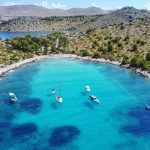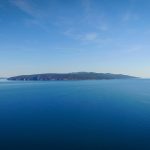June 27, 2019 – Just months after European Parliament President Antonio Tajani caused uproar by referring to Italian Istria and Italian Dalmatia, an Italian flag is raised at Trsat Castle in Rijeka.
One of my favourite pub quiz questions is the following:
Can you name the European city which was part of 12 different countries in the 20th century?
A city, which if you were born there in 1913 and lived to 1991, would have meant that you had visited 12 countries without leaving home.
The answer is the European City of Culture 2020 – Rijeka.
Someone born here in 1913 and alive in 1991 would have been travelling without moving through the following states: the Austro-Hungarian Monarchy, the State of Slovenes, Croats and Serbs, the Kingdom of Serbs, Croats and Slovenes, the Italian Regency of Kvarner, the Free State of Rijeka, the Kingdom of Italy, the Kingdom of Yugoslavia, the Independent State of Croatia, the Third Reich, the Socialist Federal Republic of Yugoslavia and finally, the Republic of Croatia.
In Italy, Rijeka has a very different name, Fiume. And with such Venetian and Italian influence on Rijeka, Istria and Dalmatia over the centuries, there are those who yearn for a return of these territories to Italian control.
Comments made by the European Parliament President Antonio Tajani back in February caused uproar in Slovenia and Croatia, and he was forced to apologise over comments made at the commemoration of WWII foibe (karst pits) victims in Basovizza near Trieste, when he reportedly said:
“Long live Trieste, long live Italian Istria, long live Italian Dalmatia.”
It seems that Tajani’s Italian interest in the Italian coast is not an isolated case. Earlier this month, on June 11, TCN was informed that a few days previously, three Italians travelled to Rijeka with the specific aim of raising the Italian flag at Trsat Castle.
A video of the action at Trsat was sent to us today, which we publish without comment.
To learn more about the fascinating history of Rijeka, here are 25 things to know.









